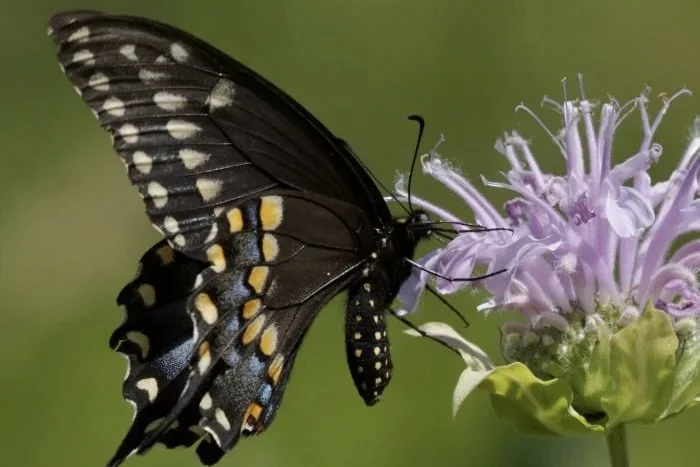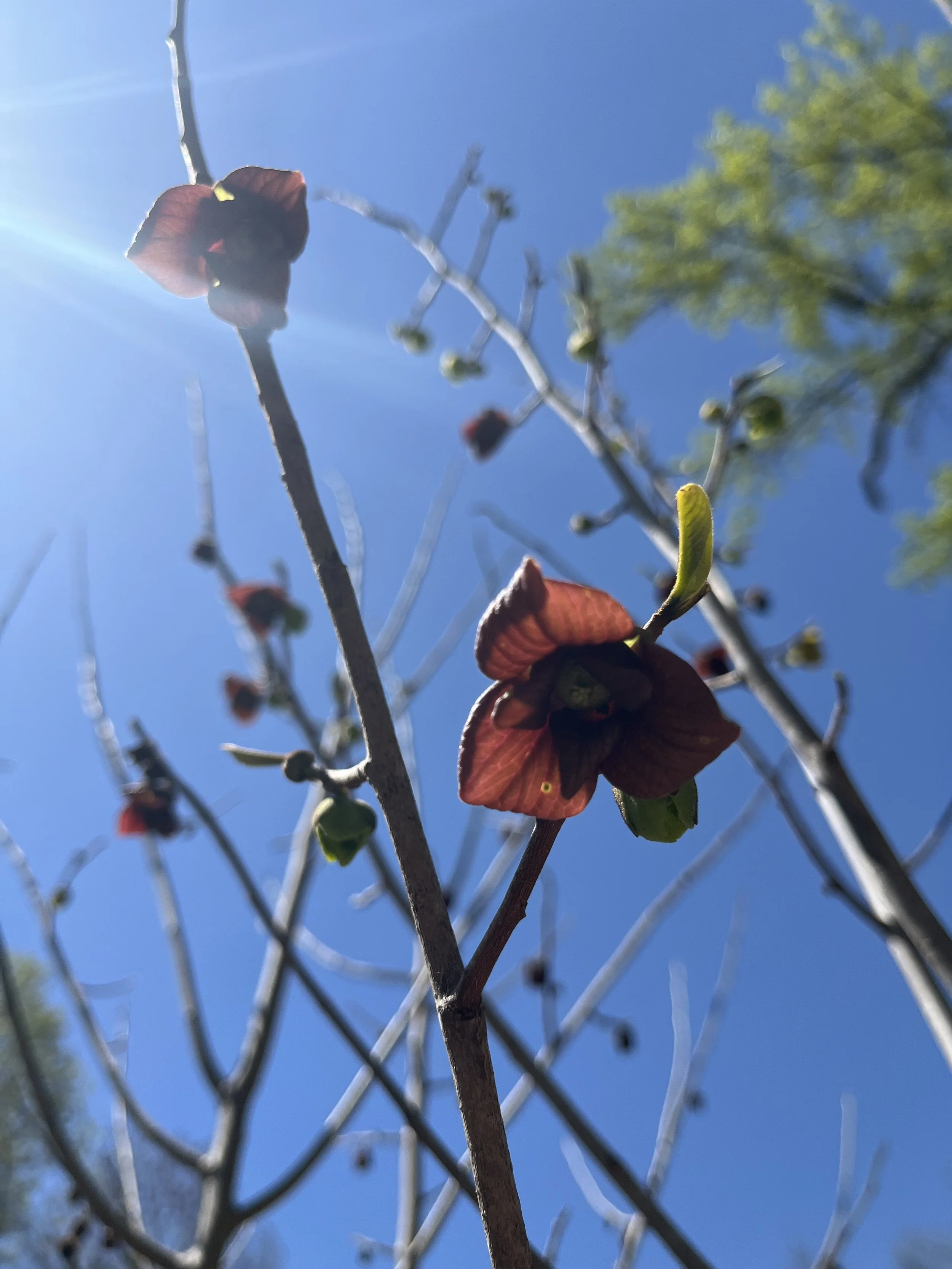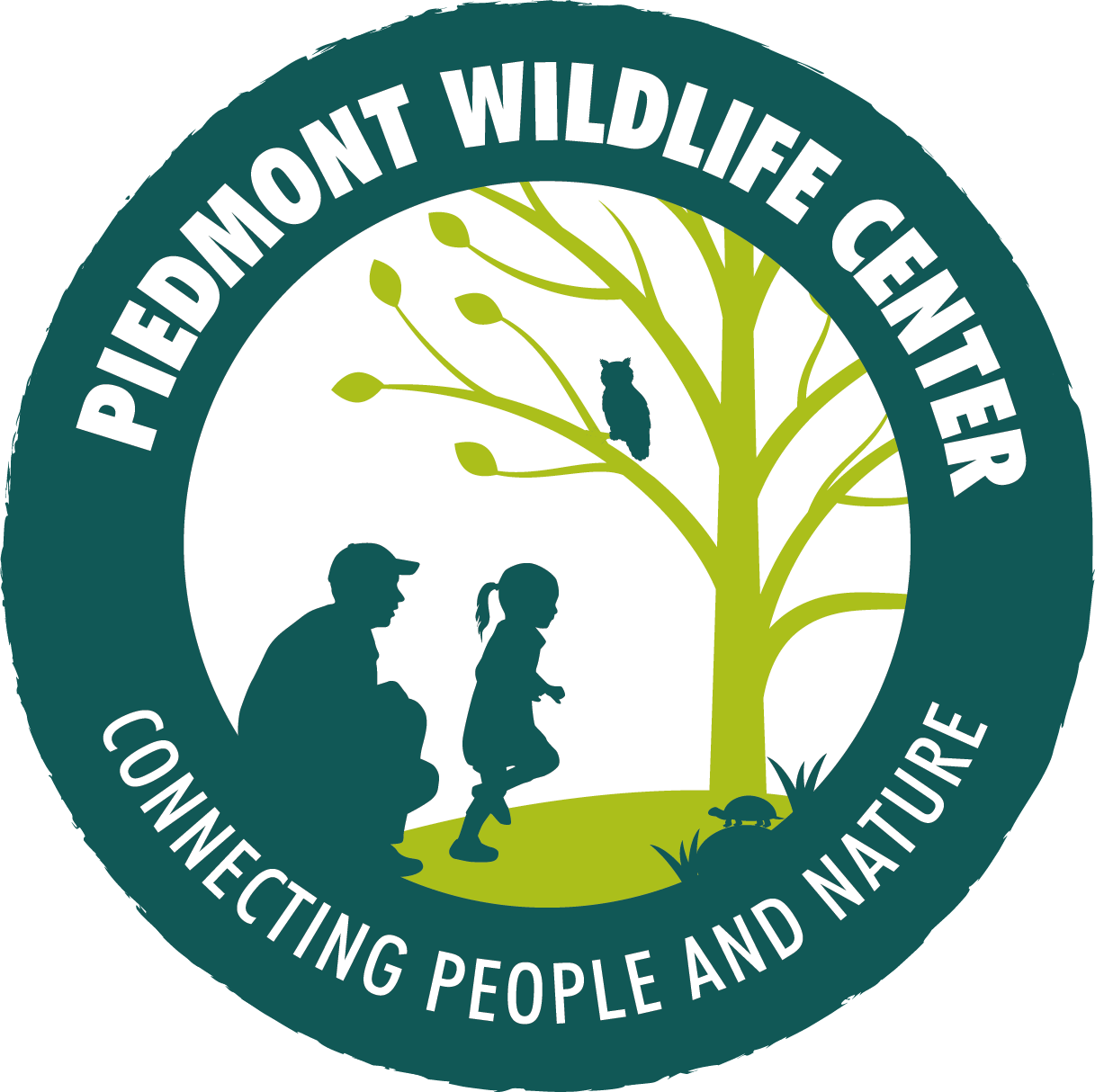Carolina Wild Petunia (Left) and Southern Magnolia (Right). Photos by Karen McCall.
Join our retiring Executive Director, Karen McCall, as she shares her last installment in our Plant Magic series. The reins will be passed to Camryn Jefferson, another member of our staff who is passionate about plants. In Karen's farewell installment, she brings you two plants that remind her of summer, resilience, and childhood!
It is with a heavy heart that I write my last piece of our Plant Magic series. I've delighted in sharing all the flora with you. It has brought lightness to my soul, smiles to my face, and deep gratitude for my senses and the beauty of our surroundings. In my last piece, I brought you white clover, Trifolium repens. Although I never referred to it as a native plant, I want to clarify that it is NOT native but does a lot to amend the soil. There are two clovers native to NC, but unfortunately, both are extremely rare. The first is Carolina Clover, Trifolium carolinanum, which looks similar to white clover but with a hint of pink. If you're lucky, you might find them by our coast in New Hanover, Onslow, and Duplin counties. The other is Buffalo Clover, Trifolium reflexum, whose red or white flower sits above the leaves. They have been found in Randolph, Stokes, Caswell, and other counties around our state.
Now, I want to introduce you to two native plants that remind me of my time at Piedmont Wildlife Center ("PWC"). One, a common roadside and woodland plant, Carolina Wild Petunia, Ruellia caroliniensis, and two, the classic Southern Magnolia, Magnolia grandiflora. The Ruellia blooms from spring through summer and catches my eye everywhere I roam with its purple flowers. Despite the heat, humidity, dry spells, and thunderstorms of the season, the Carolina Wild Petunia continues to flash a few of its five-petalled flowers. There aren't many wildflowers blooming right now, so this one pops out. To me, this plant reflects the power of resilience. Throughout my time here, we have had some unbelievable challenges yet remained as resilient as Ruellia through them all, and I believe we will continue to do so.
As I reflect on so many great memories and relationships that have grown in our community, I link many with smells. "Smell and memory seem to be so closely linked because of the brain's anatomy," says Harvard's Venkatesh Murthy, a Life Sciences Professor and chair of the Department of Molecular and Cellular Biology. Fires have always been an important part of our camp programs, and the aromas of cedar and oak leave me feeling happy, free, and cleansed. Their smells bring back fond memories of campers' first experiences with fire-making, and the excitement, fear, and empowerment that that activity brought. Flashes of backpacking trips, our annual solstice celebrations, and camping trips from a very young age to the present dance through my head.
The smell of Southern Magnolia brings me visions of summer, all stemming (no pun intended) from growing up in Chapel Hill and going to the outdoor pool at UNC for swim lessons. Two big trees lined the steps leading to the pool, and I would inhale as deeply as I could when going down those steps. After spending many years in our Plant Guild classes at PWC, I am now drawn to the way this tree grows with its large gray trunk and low sweeping branches, the feel of the six-inch blossoms with 6 to 12 petals, and ovate, glossy, leathery leaves, so strong and protective. There is one near me that appears to have multiple trunks that grew from the main roots, though that is not described in any of the books I used for reference. These trees are planted in many yards as ornamentals, are native to North Carolina, and are evergreen. Traditionally, the Southern Magnolia was used to treat circulatory system disorders, and, according to NC Extension Gardener Plant Toolbox, it potentially has extracts to use in pharmaceuticals.
I close this last entry with my gratitude for all of you. Thank you for supporting Piedmont Wildlife Center, and our native environment. I hope these writings have brought happy memories to you, or inspired you to engage with plants - whether by planting them, studying them, smelling them, sitting amongst them, painting your yard with their colors, or simply savoring their presence. Please continue to support PWC and connect with nature for your well-being and our planet's.
See you out in the wild!
Happy Trails,
Karen McCall
If you're interested in welcoming native plants like these into your own garden, consider supporting both your local ecosystem and Piedmont Wildlife Center by buying plants from Garden for Wildlife by National Wildlife Federation! 15% of each purchase you make through our referral link will be donated directly to Piedmont Wildlife Center to help us connect more people with nature. Purchase your plants before July 21st to take advantage of their Christmas in July sale!


















